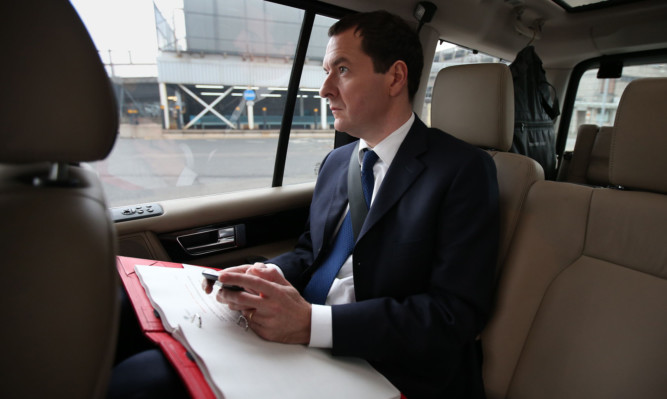
Chancellor George Osborne is facing pressure to explain what he knew about a shock demand for Britain to pay Brussels an extra £1.7 billion.
David Cameron responded furiously to the bill from the EU on Friday, complaining he had been ambushed at a summit of fellow leaders.
Warning that the move risked pushing the UK closer to the exit door, the Prime Minister insisted the money would not be paid by the December 1 deadline.
But the European Commission has dismissed his objections, saying the contribution revisions were calculated by independent statisticians using a formula agreed by all member states. That process varies the fees charged depending on economic performance.
Britain has the biggest extra demand, with other countries such as the Netherlands, Italy and even crisis-hit Greece also facing paying more.
France and Germany have actually had their contributions cut.
Labour has seized on news the Treasury was notified of the bill days before Mr Cameron was informed. They also questioned why ministers failed to realise there was a potential issue earlier.
In a letter to the Chancellor, Shadow Chief Secretary to the Treasury Chris Leslie wrote: “You have serious questions to answer about how long the Government has known about the possibility of a higher surcharge for the UK.
“The Office for National Statistics published a report four months ago detailing the changes made to UK growth figures which it stated were for use in the calculation of a member state’s contribution to the EU Budget.”
Mr Leslie demanded to know when Treasury officials became aware the process could lead to a higher bill.
He asked: “When were you made aware of the possibility of a surcharge for the UK?
“Since the new GNI statistics for 1995 to 2014 were published in May what steps has the Government taken to raise the issue of this potential surcharge with EU partners or the Commission?
“At what point did you notify the Prime Minister of these proposed surcharges?
“Why did you fail to make these surcharges public?”
Mr Leslie questioned whether ministers came to Parliament without giving information about the issue, and insisted full details of the calculations should be published when they obtained them from the EU.
“The public deserve answers, not just posturing, on a matter which could see billions of pounds of taxpayers money lost,” he added.

Enjoy the convenience of having The Sunday Post delivered as a digital ePaper straight to your smartphone, tablet or computer.
Subscribe for only £5.49 a month and enjoy all the benefits of the printed paper as a digital replica.
Subscribe